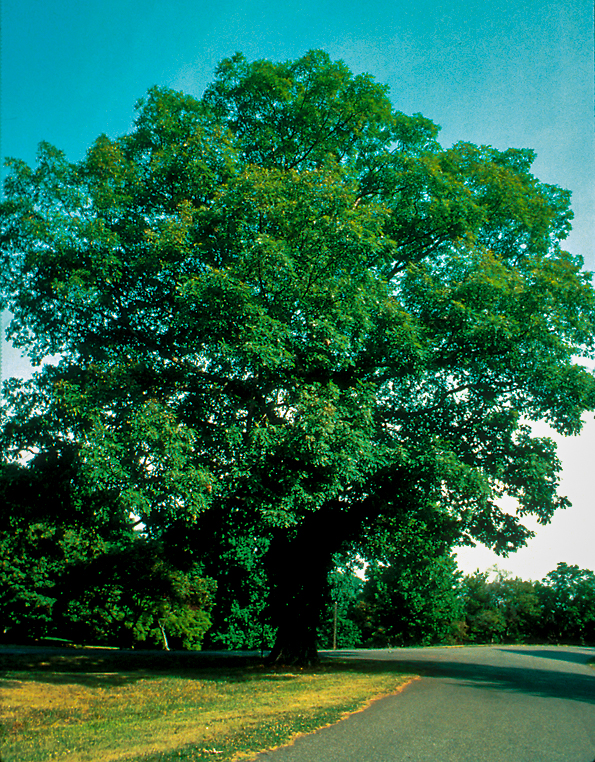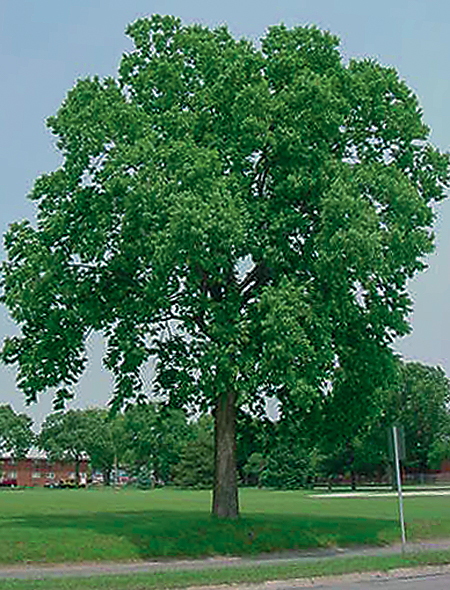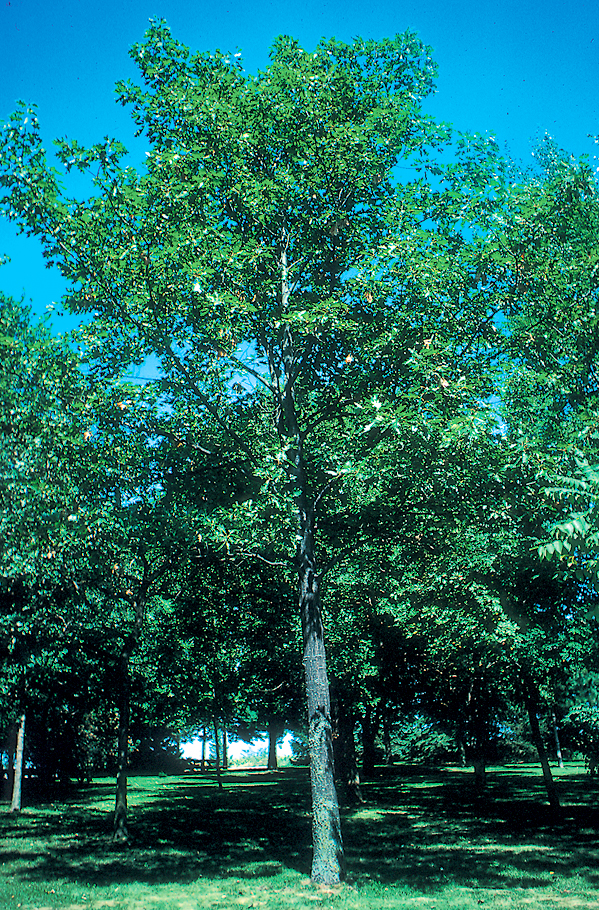 |
Bur Oak - Quercus macrocarpa
- Long-lived tree that may survive 100-300 years
- Stout twigs with alternate branches
- Deeply lobed leaves, alternately arranged on stems, fine hairs give whitish appearance to leaf undersides
- Roundish to oblong acorn with fringed cap
- Golden yellow-brown fall color
- Easily confused with swamp white oak
|
 |
River Birch - Betula nigra
- Shiny, pinkish-brown or silvery-gray bark separates into papery scales that become shaggy
- Reddish-brown, slender and hairy twigs
- Diamond-shaped whitish leaves, usually hairy beneath and shiny dark green above
- Cylindrical shaped fruit, brownish color with many hairy scales and two-winged nutlets
- Golden with a hint of red fall color
|
|

|
Hackberry - Celtis occidentalis
- Light brown to gray, warty bark
- Branches tend to drop in mature trees giving a cylindrical shape
- Slender, light brown twigs, mostly hairy and slightly zigzag
- Shiny green sharp-pointed leaves with hairy veins below and rough texture sometimes
- Leaves often have small, rounded galls caused by tiny jumping insects
- Orange-red to dark-purple fruit
- Pale yellow fall color
|
 |
Shagbark Hickory - Carya ovata
- Slow growing, attaining heights up to 100 feet
- Distinctive rough, light gray bark that peels off in long strips
- Stout, brown twigs ending in large brown hairy buds that often open with a brilliant pink to red flower-like appearance in the spring
- Finely saw-toothed and hairy compound leaves, yellow-green above and paler beneath
- Sweet edible nuts
- Golden yellow fall color
|
 |
Kentucky Coffee Tree - Gymnocladus dioicus
- Short-trunked tree with stout branches
- Large, twice compound dull green leaves
- Stout, brown twigs
- 4-7 inch red-brown pods with shiny dark-brown bean-like seeds
- Yellow fall color
|
 |
Silver Maple - Acer saccharinum
- Extremely fast growing tree
- Deeply lobed leaves, pale-green above and silvery-white below
- Winged nutlets form a wide-spread pair with a long stalk
- Yellow-green to pale yellow fall color
|
 |
Sycamore - Platanus occidentalis
- Fast-growing tree capable of exceeding 150 feet, one of the tallest North American trees
- Greenish slender twigs, zigzag shaped
- Broad, short-pointed leaves with wavy edges
- Smooth, white, gray and olive mottled bark peels off in large thin flakes
- Hairy brown ball of seeds
- Tan to brown fall color
|
|

|
Northern Red Oak - Quercus borealis
- Straight tree trunk with large spreading branches
- Slender, reddish-brown twigs
- Smooth, dull green leaves, lighter underside with tufts of hairs
- Single or pairs of acorns with shallow, reddish-brown cup
- Golden yellow-brown fall color
|
 |
Honey Locust - Gleditsia triacanthos
- Hardy, fast-growing tree
- Shiny brown, stout zigzag twigs
- Shiny, dark-green leaves above with dull yellow-green beneath
- Large dark brown pods with heavy seed crops every other year
- Yellow fall color
|
 |
Black Walnut - Juglans nigra
- Large tree with an open, rounded crown of dark green, aromatic leaves
- Stout twigs with distinctive buff colored chambered pith
- Long-pointed leaves covered with soft hairs beneath
- Nearly spherical nuts with yellowish-green husk and short hairs when ripe
- Yellow fall color
|
 |
American Linden Basswood - Tilia americana
- Commonly grows to over 100 feet above ground with a long trunk
- Reddish or green slender twigs, slightly zigzag and hairless
- Large heart-shaped leaves, smooth on both sides with long, slender leaf stalks
- Gray nut-like fruit, elliptical or rounded covered with fine hairs, mature in late summer and autumn
- Golden yellow fall color
|
 |
Eastern White Pine - Pinus strobus
- Grows fast and can live beyond 300 years of age, most live 100-150 years
- Stately tree with strong, gracefully arching limbs
- Slender, orange-brown twigs, smooth or slightly hairy, becoming gray
- Soft and flexible blue-green needles in bundles of five
- Golden yellow brown fall color
|